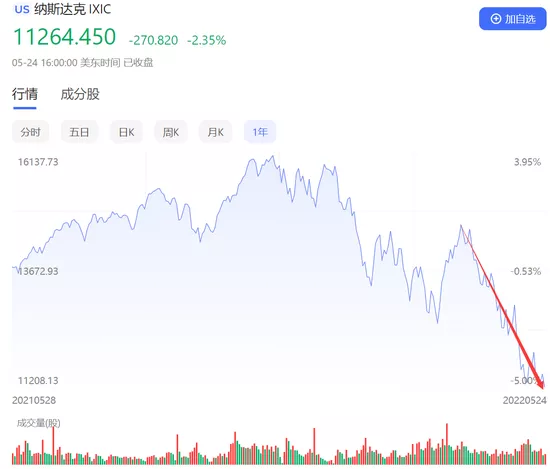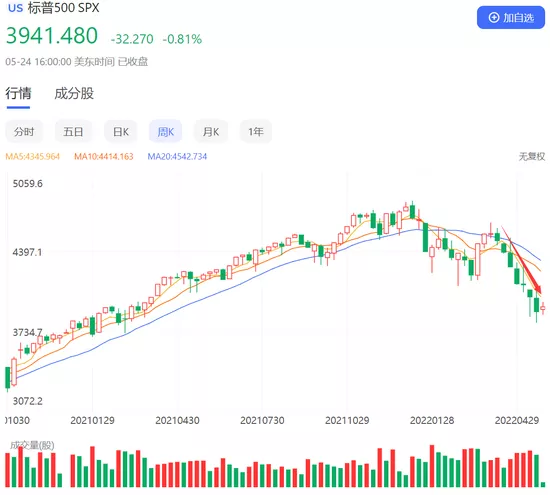Since the beginning of 2022, the US stock market can only be described as miserable. The 100th trading day of 2022 will be ushered in on Wednesday after a short rebound, but it is likely to be the worst start in history. According to Dow Jones market data, the first 100 trading days of S & P and Dow Jones index will have the worst start since 1970, while the Nasdaq 100 index dominated by technology stocks is the worst ever**
Since the beginning of this year, the standard & Poor's 500 index, the US benchmark stock index, has fallen by more than 20% and the Dow Jones index has fallen by nearly 14%.
In addition, the large-scale technology stocks that have dominated the market for a long time have suffered the most serious rout since the bursting of the Internet foam. The NASDAQ has basically plummeted in the past two months, with a cumulative decline of more than 26%, and the market value has shrunk by nearly a quarter. During this period, there were only a few strong but short-term rebounds.

Analyzing the reasons for the blood flow in US stocks, inflation is inevitable.
Given that the United States is suffering from the worst inflation in 40 years, the future earnings of enterprises have been diluted, which has reduced the current valuation of enterprises. The Fed's consistent practice is to put an eagle in its mouth and a pigeon in its hand to avoid excessive intervention leading to a recession.
In addition, commodity prices soared and food and energy prices rose sharply under "dark clouds"; In addition, the recent epidemic counterattack has exacerbated the global supply chain crisis, which has put pressure on US stocks.
When will the market bottom out
Ryan Detrick, an analyst at LPL financial, a financial company, recently pointed out that historically, mid-term elections are generally the most difficult period in the market . The average decline of US stocks from high to low is more than 17% . On average, the bottom of the market in recent years appears later in the year*
It is worth noting that the S & P 500 index has fallen for seven consecutive weeks this year, only three times in history: 2001, 1980 and 1970.

In terms of volatility, since 2022, the S & P 500 index has fluctuated by 2% or more in 40% of trading days.
In view of the amazing speed of US stock selling and investors' expectation that the US economy will fall into recession next year, the prospect of US stocks is dark At present, few analysts believe that the market has bottomed out
According to previous articles on Wall Street, Goldman Sachs and Bank of America, the two major Wall Street institutions, hold the same view and both believe that US stocks may have to continue to fall until the Federal Reserve hints to end monetary tightening**
In a report to clients, Jefferies, an investment bank, analyzed the returns of the S & P 500 after a year of historical losses as US stocks failed to rebound on Tuesday.
Analysts studied the period when the S & P 500 index fell by 10%, 15%, 20% and 25% from its previous high. Selecting the market data since the 1950s, they found that historically, U.S. stocks will not recover their losses within a year unless the stock index falls below the selling level of 25%**
This may be one of the reasons why professional fund managers are so cautious.
Strong pessimism
Bank of America's recent global fund manager survey showed that the cash position of fund managers increased by 5% in the past month, reaching the highest level in 20 years in May**
The recent survey also confirmed this pessimistic atmosphere. A measure of financial market risk is at its highest level since Merrill Lynch began the survey. At the same time, fund managers expect that the slowdown in economic growth and interest rate hike will continue to depress the stock market.
But some investors continue to be bullish on the stock market.
JPMorgan Chase recently said that the world's large funds seem to be ready to revive the flagging stock market through $250 billion investment. "Given the current extremely low depth of the stock market, the cumulative impact of this rebalancing flow of funds on the stock market may exceed 10% by the end of June."